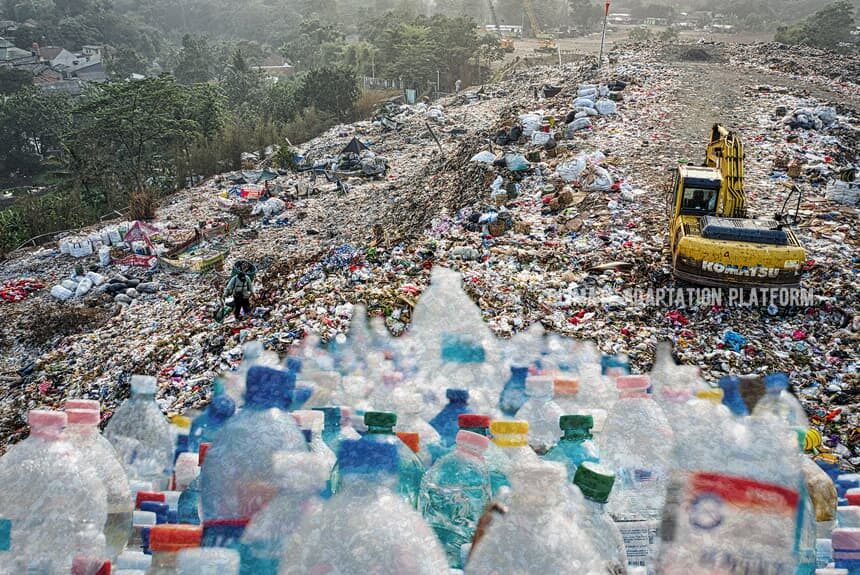Plastic has undoubtedly made our lives easier. It is light, flexible, strong, and cheap. Hence we saw a dramatic rise in its production and replaced more and more materials we use daily.
Plastic has become ubiquitous in our daily lives. Our disposable dishes and eating utensils are made of plastic. We use plastic for packaging our food and drinks. Our clothes, toys and some parts of our appliances, equipment, and even vehicles are made of plastic.
The Bloomberg article “The Climate Impact of Our Insatiable Plastic Addiction” shows how plastic usage and production have risen yearly since 1950 – the year produced 2 million metric tons. In 2022, plastic production reached 400 metric tons. If production trends continue, by 2050, production could reach 1.1 billion metric tons.
Increases in plastic production also mean a rise in emissions.
The article mentions the following:
- While it is true that we can recycle stuff, according to the EPA estimates, only 12% of all the plastics produced get recycled.
- Our reliance on plastic because of its convenience also comes at a substantial environmental cost and contributes to our global emissions. It pollutes our oceans and clogs our streams. A Bangkok plant melts down plastics and sends fumes that can cause health problems.
- In 2019, plastic was responsible for 1.8 billion metric tons of GHG emissions, 3.4% of the total global emission, according to the Organisation for Economic Co-operation and Development.
- The figure will exceed 2.5 billion metric tons by 2050 if current trends of production and use will continue that cause climate change.
- According to the article, the United States has become the global centre of plastic production and its biggest market.
- Plastic is derived from fossil fuels and emits planet-warming gases such as methane and carbon dioxide.
- The article mentions that by 2025, the amount of plastic emissions in the United States will reach 401 metric tons from the following activities: resource extraction, production, transportation, consumption and imports, and incineration.
- While other industries worldwide, such as buildings, power generation, and agriculture, are racing to decarbonize, the plastic industry is going in the opposite direction and will only continue to grow exponentially. This is to offset oil major’s declining revenues from fuel sales as countries transition to clean energy, the article explains.
- Between 2010 and 2018, the United States invested $200 billion to set aside natural gas supplies for plastic production.
- According to the article, as plastic production rises in the United States rises, emissions could triple by 2060.
- Infrastructure that supports plastic production in the country is also growing, which could potentially add to the global emissions from the plastic lifecycles starting from production, disposal, and incineration.
Kaufman (2022) explains that only a fraction of plastics are produced as recycled, and some of them end up somewhere in the environment, which, as it decomposes, releases exponential amounts of gases. Aside from plastics’ harmful effects on the environment and climate, plastics can enter the human bloodstream and breastmilk.
Although the science of microplastics is still in its infancy, researchers have found that plastics “disrupt the microorganisms that eat carbon dioxide and reduce the planet’s ability to sequester carbon and heal itself.”
Below are what experts suggest ways to do it (Kaufman, 2022).
- First is applying the carbon capture technology, but this one comes at a hefty price.
- Second, utilize the power of data and information on plastic waste to make informed decisions.
- Third, banning single-use plastics, reducing plastic production, safe recycling, making polluters pay, and banning plastic waste exports to other countries.
Alternatives to plastic, such as plant-based ones derived from sugar or corn, exist; however, they still contain 70% of fossil fuel and pose pollution problems like regular plastics.
The hope is thereby limiting our plastic use or reducing its impact on the environment and the climate.
Source:
Kaufman, L. (2022, December 31). The Climate Impact of Our Insatiable Plastic Addiction. Bloomberg. Retrieved from https://www.bloomberg.com/graphics/2022-plastic-climate-change-pollution-data/



Leave a Reply